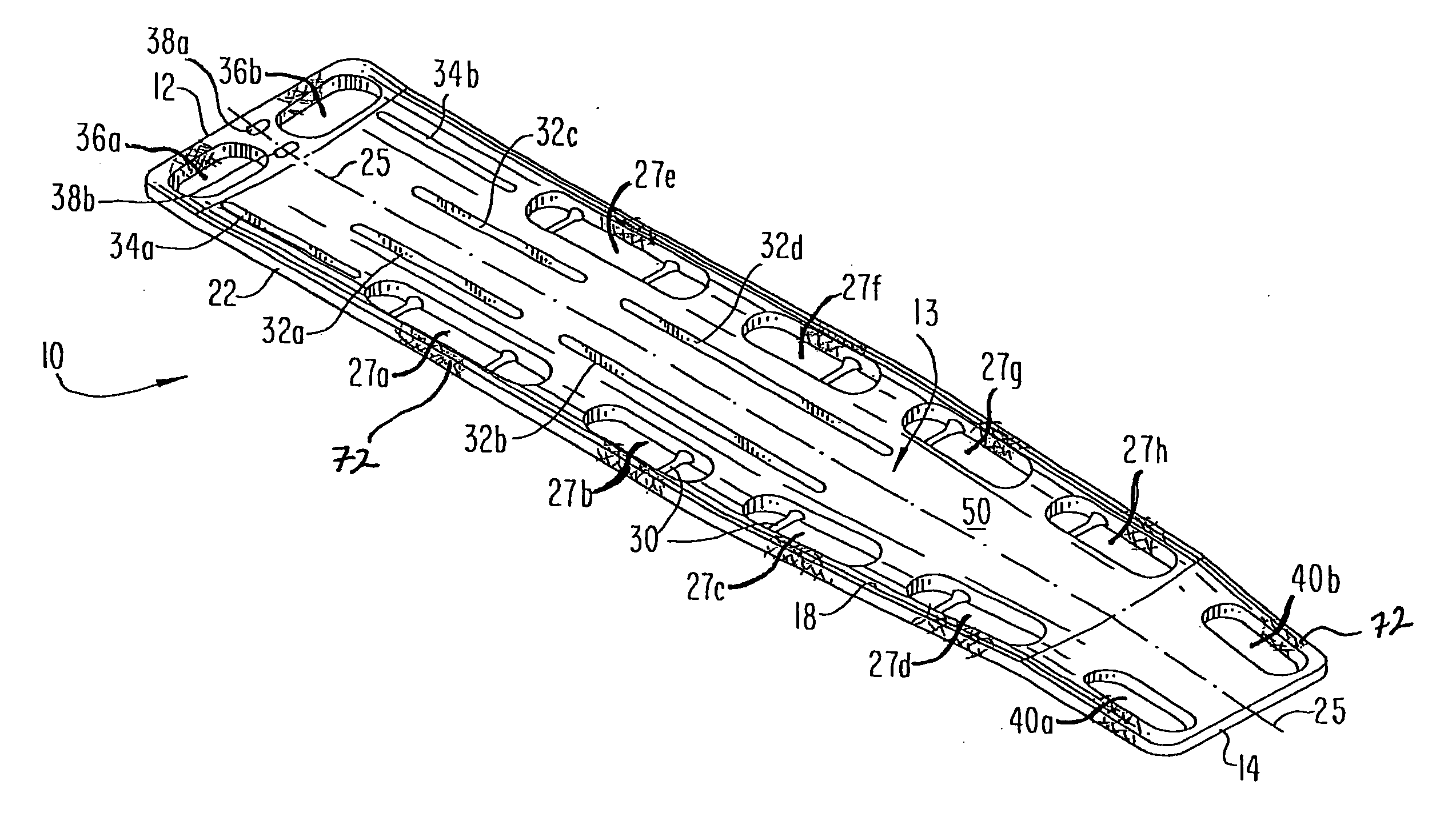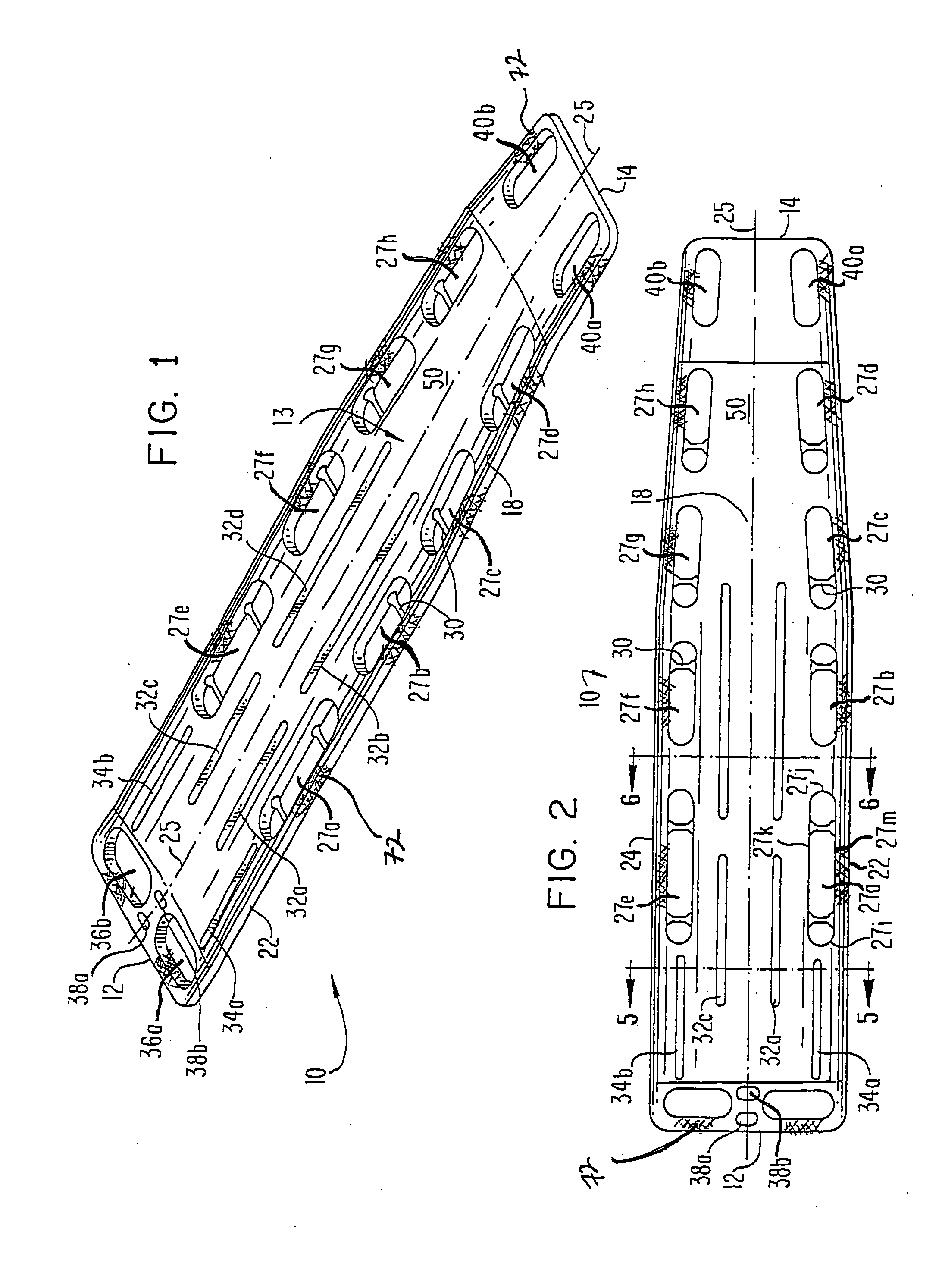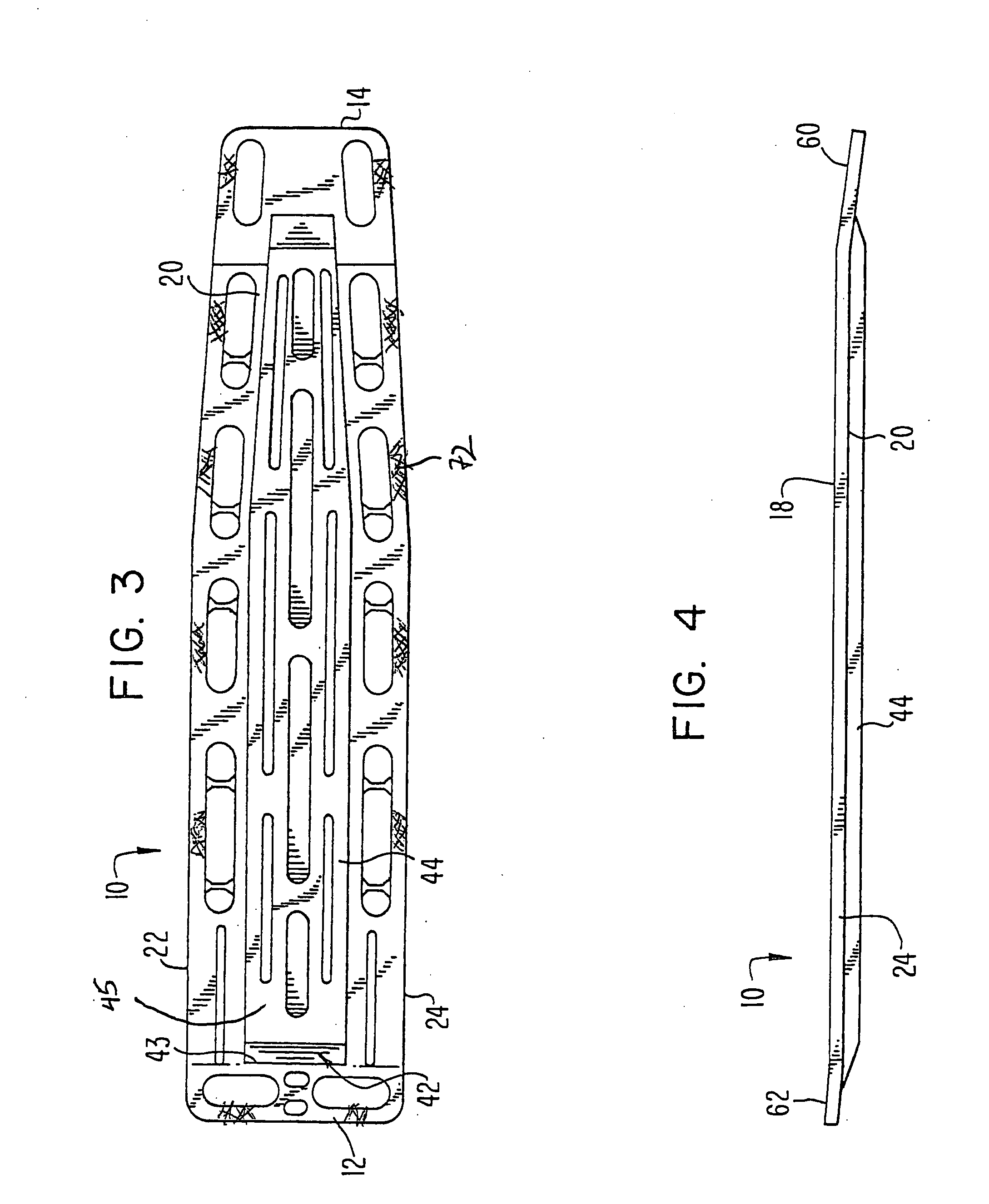Thermoplastics spine board with ergonomic features
- Summary
- Abstract
- Description
- Claims
- Application Information
AI Technical Summary
Benefits of technology
Problems solved by technology
Method used
Image
Examples
Embodiment Construction
[0029] FIGS. 1 to 7 illustrate an embodiment of a light-weight, vacuum-formed thermoplastic spine board 10, according to the invention, having a head end 12, a main body portion 13, and a tail end 14. The tail end 14 is narrower than the head end 12, so the body portion 13 narrows accordingly. The spine board 10, when completed, is a unitary, sealed structure that has a foam core 16 (shown at least within the cross sectional views of FIGS. 5A, 5B, 6A and 6B).
[0030] The spine board 10 may be made from a thermoplastic material, such as an ABS resin or other suitable thermoplastic material, with a foam core 16 made from a polyethylene, or urethane foam core. The spine board 10 is further defined by a top surface 18 (best seen in FIGS. 1, 2 and 4), a bottom surface 20 (best seen in FIGS. 3 and 4), a right side portion 22 interconnecting the top and bottom surfaces 18, 20, and a left side surface 24 interconnecting the top and bottom surfaces 18, 20. For a convenient convention, the ter...
PUM
| Property | Measurement | Unit |
|---|---|---|
| Angle | aaaaa | aaaaa |
| Speed | aaaaa | aaaaa |
Abstract
Description
Claims
Application Information
 Login to View More
Login to View More - R&D
- Intellectual Property
- Life Sciences
- Materials
- Tech Scout
- Unparalleled Data Quality
- Higher Quality Content
- 60% Fewer Hallucinations
Browse by: Latest US Patents, China's latest patents, Technical Efficacy Thesaurus, Application Domain, Technology Topic, Popular Technical Reports.
© 2025 PatSnap. All rights reserved.Legal|Privacy policy|Modern Slavery Act Transparency Statement|Sitemap|About US| Contact US: help@patsnap.com



